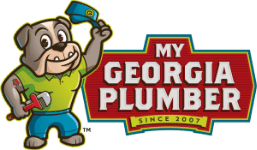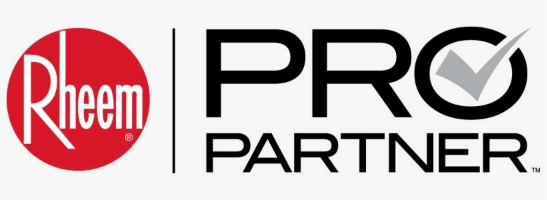
A continued summary of significant revisions of the International Plumbing Code to be published in the 2021 edition.
This is the continuation of a series of columns covering only the code changes that were approved as submitted from 2018 to the 2021 International Plumbing Code (IPC) change hearings. There were many code change proposals and two rounds of code hearings for the 2018 IPC. The following is a summary of the significant code changes that were approved during the International Code Council hearings in Columbus, Ohio, and Richmond, Va.
These code changes will appear in the 2021 edition of the International Plumbing Code, which will soon be published and available for jurisdictions to consider for adoption. I recommend you refer to the 2021 IPC for the final version of any code changes reported on hereinafter.
Proposed additions are underlined and deletions are struck through. They are followed by the proponents’ published reason statements, along with any of my comments, as noted.
Code Change: IPC Section 412.10
Revise as follows:
412.10 Head shampoo sink faucets.
Head shampoo sink faucets shall be supplied with hot water that is limited to not more than 120° F (49° C). Each faucet shall have integral check valves to prevent crossover flow between the hot and cold water supply connections. The means for regulating the maximum temperature shall be one of the following:
1. A limiting device conforming to ASSE 1070/ASME A112.1070/CSA B125.70.
2. A thermostatic mixing valve conforming to ASSE 1017.
3. A water heater conforming to ASSE 1082.
4. A water heater conforming to ASSE 1084.
5. A temperature actuated flow reduction device conforming to ASSE 1062.
Proponent’s reason statement: The scald prevention requirements for head shampoo sink faucets is similar to the upper limit requirement for shower valves. There [are] other viable means available for setting the maximum temperature besides a device complying with ASSE 1070/ASME A112.1070/CSA B125.70.
Section 412.7 already permits the use of a TAFR complying with ASSE 1062 for controlling the water temperature discharging from a faucet. Hence, the identification of the standard in this section complements the requirements in Section 412.7.
A thermostatic mixing valve is an effective method of regulating the maximum temperature. The temperature is maintained within a few degrees, depending on the flow rate. Scalding temperatures are in excess of this temperature. Other viable means of maintaining the water temperature to a maximum of 120 F are water heaters meeting one of the two new standards.
The two new standards for water heaters are ASSE 1082 and ASSE 1084. These water heaters are equivalent to ASSE 1017 and ASSE 1070, respectively. As such, they have the capability of providing an equivalent level of performance as the corresponding mixing valve.
My comments: There were a couple of issues with this code change. As stated in previous code change comments, an ASSE 1082 device that conforms to the requirements of an ASSE 1017 mixing valve has not been considered a scald protection device, according to ASSE.
A shampoo sink faucet is a shower application for your head where the user is laying in a compromising position and does not have access to the controls or to the shower spray head. When a user is standing at a lavatory or any kind of sink, typically they are not in a compromising position. If the water suddenly gets too hot, it is easy for the user to withdraw his or her hands to avoid serious scald burns.
However, when someone else controls the water temperature and the shampoo sink faucet spray wand, and the user is laying with his or her head in a shampoo sink bowl, the risk of scalding increases. An ASSE 1017 temperature-actuated mixing valve would not be appropriate temperature controls for a shampoo sink faucet because of the testing requirements that allow such a large temperature swing and a significant time delay before measuring the outlet temperature, such that sudden spikes in temperature can be mixed in with the flow of water in the distribution piping.
So, it only seems logical that an ASSE 1082 water heater that meets the same temperature control requirements as the ASSE 1017 thermostatic mixing valve, which is intended for hot water system distribution systems, should not be used for point-of-use scald prevention applications, such as at a shampoo sink faucet. If 1082 devices are allowed, the same temperature swings and time delays associated with temperature spikes or variations in the 1017 standard will be allowed to occur.
I have investigated several shampoo sink faucet installations in hair salons where flush toilets or washing machines were installed on the opposite side of a wall or nearby. The shampoo sinks often have two-handle faucets with nonpressure or nontemperature-compensating controls for the shampoo spray hose. This combination without check valves to prevent crossover flow creates a condition ideal for full hot water temperature to flow from the spray hose when there is a pressure disturbance.
When there is a cold water pressure drop from a fixture flushing or a washing machine nearby filling, it can cause a sharp rise in hot water temperature, such that the person laying with their head in the shampoo bowl can experience significant thermal shock. In some cases, the person can be exposed to scalding hot water while in a somewhat compromised position.
This can cause scald injuries instantly. In my opinion, only the ASSE 1084-type water heater and the ASSE 1070 devices are appropriate for shampoo sink faucet applications.
Code Change: IPC Section 412.11
Add new text as follows:
412.11 Pre-rinse spray valve.
Pre-rinse spray valves for commercial food service shall conform to ASME A112.18.1/CSA B125.1
Proponent’s reason statement: Currently, the IPC does not address pre-rinse spray valves, but these are in widespread use for rinsing off dirty dishes prior to putting them though a commercial dishwasher. IPC Section 412.6 is not sufficiently clear enough as to whether this applies to pre-rinse spray valves. Therefore, this new section is needed.
Code Change: IPC Sections 202, 419.1 and 419.3
Add new definition as follows:
GROUP WASH FIXTURE. A type of lavatory that allows more than one person to utilize the fixture at the same time. The fixture has one or more drains and one or more faucets.
Revise as follows:
419.1 Approval.
Lavatories shall conform to ASME A112.19.1/CSA B45.2, ASME A112.19.2/CSA B45.1, ASME A112.19.3/CSA B45.4 or CSA B45.5/IAPMO Z124. Group wash fixtures shall conform to the requirements of Section 402. For determining the number of lavatories required by Table 403.1, every 20 inches (508 mm) of rim space of a group wash fixture shall be considered as one lavatory.
Code Change: IPC Section 419.3
419.3 Lavatory waste outlets.
Lavatories and group wash fixtures shall have a waste outlets outlet not less than 1 1/4 inches (32 mm) in diameter. A strainer, pop-up stopper, crossbar or other device shall be provided to restrict the clear opening of the waste outlet.
Proponent’s reason statement: The current code uses two terms to describe the same fixture. In Section 419.1 the term “group wash-up equipment” is used. In Section 419.5, the term “group wash fixture” is used. The proper term used in the plumbing industry is group wash fixture.
Definition of group wash fixture is being added. The group wash fixture definition identifies what the fixture is, including that there could be one or more drains and one or more faucets connected with the fixture.
The changes to the subsections in Section 419 become editorial in nature with the addition of the definitions. There is also clarification added that the 20 inches of rim space is only used for determining number of lavatories that are specified in Table 403.1. This is the only application of the 20 inches of rim space.
Code Change: IPC Sections 416.1
416.1 Approval.
Domestic food waste disposers shall conform to ASSE 1008 and shall be listed and labeled in accordance with UL 430. Commercial food waste disposers shall be listed and labeled in accordance with UL 430. Food waste disposers shall not increase the drainage fixture unit load on the sanitary drainage system.
Proponent’s reason statement: The current code requires domestic food waste disposers to conform with UL 430. However, this standard applies to both domestic and commercial food waste disposers. A second sentence has been added to address commercial food waste disposers. It should be noted that ASSE 1008 only applies to domestic food waste disposers, hence the word “commercial” cannot be added to the first sentence.
My comment: Commercial food waste disposers are already required to be listed for their application. This merely adds the correct standard for testing and listing to the code.
Code Change: IPC Sections 421.1
Revise as follows:
421.1 Approval.
Prefabricated showers and shower compartments shall conform to ASME A112.19.1/CSA B45.2, ASME A112.19.2/CSA B45.1, ASME A112.19.3/CSA B45.4 or CSA B45.5/IAPMO Z124. Shower valves for individual showers shall conform to the requirements of Section 412.3.
Proponent’s reason statement: The current standards are only for ceramic and plastic-type plumbing fixtures. Including standards for enameled cast iron, enameled steel plumbing fixtures and stainless-steel fixtures provides for more flexibility in fixture selection. The added standards are already in the IPC.
This proposal is submitted by the ICC Plumbing/Mechanical/Gas Code Action Committee (PMG CAC).
Code Change: IPC Sections 421.3.1
Add new text as follows:
421.3.1 Waste Fittings.
Waste fittings shall conform to ASME A112.18.2/CSA B125.2.
Proponent’s reason statement: Section 421.3 discusses the waste outlet requirements for showers but there is no mention of waste fittings. Waste fittings are only mentioned in 412.1.2 for faucets or 412 for floor and trench drain types. The latest version of ASME A112.18.2/CSA B125.2 contains specific requirements for typical shower drains and also linear-type drains which are different from trench-type drains.
This standard also includes requirements for built-up shower drain systems which are normally used in field-fabricated shower systems.
My comment: This proposal simply identifies the product standard that the industry is already making these waste fittings comply with and are certified to.
Code Change: IPC Sections 423.3
Revise as follows:
423.3 Footbaths and pedicure baths.
The water supplied to specialty plumbing fixtures, such as pedicure chairs having an integral foot bathtub and footbaths, shall be limited to not greater than 120° F (49° C) by a water-temperature-limiting device that conforms to ASSE 1070/ASME A112.1070/CSA B125.70 or CSA B125.3 or from a water heater complying with ASSE 1082 or ASSE 1084.
Proponent’s reason statement: There are two new standards for water heaters, ASSE 1082 and ASSE 1084. These water heaters are equivalent to ASSE 1017 and ASSE 1070, respectively. As such, they have the capability of providing an equivalent level of performance as the currently listed water-temperature limiting device.
Water heaters complying with either one of these standards can provide tempered water within a range of a few degrees, depending on the flow rate. The temperature range is similar to the allowable temperature range for an ASSE 1070/ASME A112.1070/CSA B125.70 device.
My comments: The same issue with the ASSE 1017 vs. ASSE 1082 standard applies to this code change. As stated in previous code change comments, an ASSE 1082 device that was developed based upon matching the temperature control requirements of an ASSE 1017 mixing valve has not been considered a scald protection device, according to ASSE for point-of-use applications. This is because of the significant temperature swings and significant time delay in measuring the temperature in the ASSE 1017 standard that the ASSE 1082 device testing was based upon.
Code Change: IPC Sections 202, 425.1, 425.1.1, 425.1.2 and 425.1.3
Revise as follows:
425.1 Approval.
Water closets shall conform to the water consumption requirements of Section 604.4 and shall conform to ASME A112.19.2/CSA B45.1, ASME A112.19.3/CSA B45.4 or CSA B45.5/IAPMO Z124. Water closets shall conform to the hydraulic performance requirements of ASME A112.19.2/CSA B45.1. Water closet tanks shall conform to ASME A112.19.2/CSA B45.1, ASME A112.19.3/CSA B45.4 or CSA B45.5/IAPMO Z124. Electro-hydraulic water closets shall comply with ASME A112.19.2/CSA B45.1. Water closets equipped with a dual flushing device shall comply with ASME A112.19.14.
Add new definition as follows:
DUAL FLUSHING DEVICE.A feature that allows the user to flush a water closet with either a reduced or full volume of water depending upon bowl contents.
Add new text as follows:
425.1.1 Hydraulic performance.
Water closets shall conform to the hydraulic performance requirements of ASME A112.19.2/CSA B45.1.
425.1.2 Water closet tanks.
Water closet tanks shall conform to ASME A112.19.2/CSA B45.1, ASME A112.19.3/CSA B45.4 or CSA B45.5/IAPMO Z124.
425.1.3 Dual flush water closets.
Water closets equipped with a dual flushing device shall comply with ASME A112.19.14.
Proponent’s reason statement: This proposal revises Section 425.1 so that it is more user friendly. Adding specific requirements to the IPC will assist the end user to know which standards apply to what fixture. The definition for dual flushing device is being added as code does not have a definition. The definition is consistent with the definition found in ASME A112.19.14.
This proposal is submitted by the ICC Plumbing/Mechanical/Gas Code Action Committee (PMG CAC).
My comments: This proposal simply removed the standards from a long list of standards and slit them out into sub-headings that explain what each standard is for.
This is a continuation of coverage on the significant plumbing code changes from the 2018 to the 2021 International Plumbing Code. Over the next few months, we will continue with the significant changes to the International Plumbing Code. Following that, we will cover the significant changes to the Uniform Plumbing Code.







